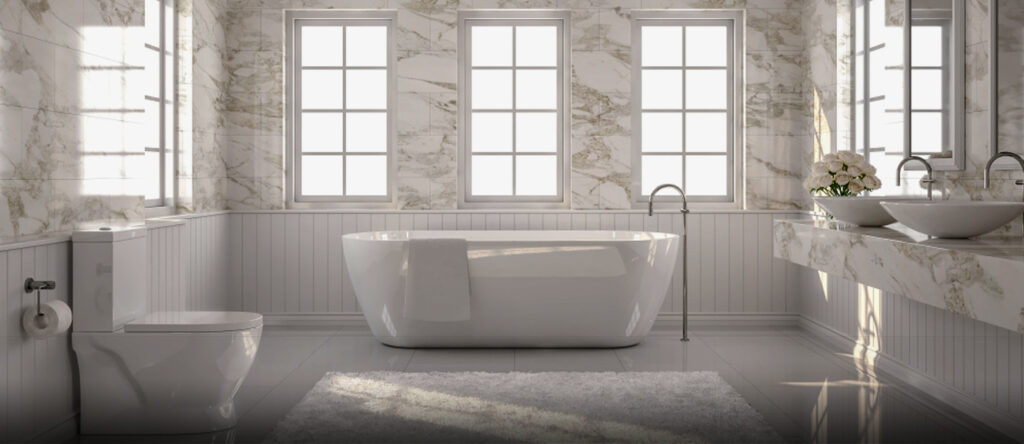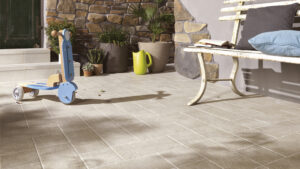Herringbone tiles have become a popular design choice in modern interiors, adding texture, sophistication, and timeless elegance to a wide range of spaces. The classic zigzag pattern, once reserved for high-end homes and royal palaces, is now more accessible than ever, making it a staple in kitchens, bathrooms, living rooms, and even outdoor spaces. However, despite their popularity, installing herringbone tiles can be a bit tricky due to the precise alignment and unique layout. If not done correctly, it can lead to uneven lines, misaligned patterns, or even damaged tiles. To help you achieve the perfect look, we’ve compiled a list of the top 10 mistakes to avoid when installing herringbone tiles.
Introduction: Why Herringbone Tiles are Trending
Herringbone tiles have an undeniable charm. The striking V-shaped pattern creates movement and texture, making it an ideal choice for homeowners looking to add visual interest to their spaces. Whether you’re updating a bathroom floor, creating a stunning backsplash in your kitchen, or designing a show-stopping floor for your living room, herringbone tiles are a versatile option that can work across various design styles.
However, while they offer immense aesthetic appeal, the installation of herringbone tiles requires a high degree of precision. From alignment to cutting tiles at precise angles, installing herringbone tiles can present challenges that, if overlooked, can result in a less-than-perfect finish. But fear not – by avoiding the common mistakes discussed in this article, you can ensure your herringbone tile project is a success.
A Brief History of Herringbone
The herringbone pattern has a rich and ancient history that dates back over two millennia. Its origins can be traced to the construction of Roman roads, where the V-shaped design was used for its structural integrity. The design helped distribute weight evenly, making the roads more durable and resistant to wear. This practical application was paired with an aesthetic appeal that quickly caught on.
As time passed, the herringbone pattern made its way into the homes of European nobility, appearing in parquet flooring as early as the Renaissance period. The intricate design became synonymous with luxury, wealth, and fine craftsmanship. Over time, herringbone spread across architecture, furniture, and textiles, and in modern design, it remains a staple for its ability to bring both sophistication and visual intrigue to any space.
Why Herringbone is Back in Style
Herringbone tiles are experiencing a resurgence in interior design, and there are several reasons why they’re more popular than ever, especially in Australia and globally:
1. Versatility
One of the reasons herringbone tiles are so widely used today is their incredible versatility. The pattern can be adapted to both modern and traditional spaces, making it a favorite for a range of design styles. Whether you’re creating a sleek, contemporary kitchen or a rustic, farmhouse-inspired bathroom, herringbone tiles add an extra dimension to the space.
2. Timeless Aesthetic
The geometric appeal of herringbone gives it a timeless quality, making it an investment that will remain stylish for years to come. Unlike trendy patterns that quickly fade in popularity, herringbone never goes out of style. It’s a classic pattern that works with nearly every color palette and material, ensuring your space will look elegant and on-trend for many years.
3. Modern Design Trends
As design continues to evolve, geometric patterns like herringbone have become a popular trend. The sharp lines and bold angles fit perfectly with the minimalist, clean design favored in contemporary interiors. Herringbone can serve as the perfect feature to break up monotony, adding interest and creating a striking focal point.
See more: The Benefits of Underground Utility Locating Services for Developers
Design Applications: Where Herringbone Tiles Work Best
Herringbone tiles are adaptable and can be used in a variety of areas throughout your home. Here’s where they work best:
1. Bathrooms
In bathrooms, herringbone tiles can be used on the floor, shower walls, or as a backsplash behind the vanity. The intricate pattern adds texture and depth to small spaces, creating a luxurious, spa-like atmosphere. Herringbone works particularly well with materials like marble, porcelain, or ceramic.
2. Kitchens
In kitchens, herringbone tiles are frequently used as a backsplash behind the stove or sink. The dynamic pattern contrasts beautifully with sleek countertops and modern cabinetry, creating a stylish focal point. Herringbone is also an excellent option for kitchen floors, providing both style and durability.
3. Living Spaces
The herringbone pattern works particularly well in living rooms and hallways. Whether you’re using it on the floor or as a statement wall, herringbone tiles can help define a space and create a sense of luxury. Wood-look tiles arranged in a herringbone pattern can bring warmth and a touch of nature into your living space.
4. Outdoor Areas
Don’t forget about outdoor spaces like patios and entryways. Porcelain or natural stone herringbone tiles are durable and weather-resistant, making them a great choice for outdoor areas. The pattern adds sophistication to garden paths, terraces, and other outdoor settings, blending beauty and functionality.
Materials and Finishes: Choosing the Right Tile
The material you choose for your herringbone tiles can greatly affect the overall look of your space. Popular options include:
1. Ceramic and Porcelain Tiles
These are the most common choices for herringbone patterns due to their affordability, durability, and wide range of colors and finishes. Porcelain, in particular, is ideal for high-traffic areas like kitchens and bathrooms, as it’s highly durable and resistant to moisture.
2. Marble
For a luxurious touch, marble herringbone tiles are an elegant choice. The natural veining in marble adds depth and sophistication, making it perfect for bathrooms, entryways, and upscale spaces.
3. Wood-Look Tiles
Wood-look tiles offer the aesthetic of wood without the maintenance concerns. Made from ceramic or porcelain, these tiles provide the warmth and texture of wood while being durable and easy to maintain.

Pros and Cons of Herringbone Tiles
While herringbone tiles offer many advantages, there are a few potential challenges to consider:
Pros
- Timeless Design: Herringbone is a classic pattern that always looks stylish.
- Visual Interest: The unique V-shaped layout adds texture, depth, and movement to any room.
- Increased Resale Value: Homes featuring high-end design elements like herringbone tiles tend to have a higher resale value.
- Versatility: Herringbone tiles work in virtually any room and design style.
Cons
- Complex Installation: Herringbone tiles require precise cuts and careful alignment, which can make installation more complicated than traditional square tiles.
- Cost: Premium materials like marble can drive up the cost of installation.
- Maintenance: Some materials, like marble or natural wood, require more upkeep than ceramic or porcelain tiles.
10 Mistakes to Avoid When Installing Herringbone Tiles
Installing herringbone tiles is an intricate process that requires attention to detail. Here are the top 10 mistakes to avoid:
1. Skipping the Layout Plan
One of the biggest mistakes when installing herringbone tiles is skipping the layout plan. Before you start, it’s essential to dry lay the tiles to visualize how the pattern will look in your space. This step helps avoid misalignment and ensures that your pattern flows evenly.
2. Ignoring the Centerline
Herringbone tiles should always start from the center of the room. Aligning the tiles with the centerline ensures that the pattern is balanced and symmetrical, giving the room a more polished look.
3. Not Using the Right Tools
To achieve clean, precise cuts, make sure you’re using the right tools, such as a wet saw or tile cutter. Using subpar equipment can lead to jagged edges and imperfect cuts that disrupt the flow of the pattern.
4. Overlooking Tile Spacing
While herringbone tiles can be laid with minimal grout lines, it’s crucial to use consistent spacers to maintain uniform gaps between tiles. Inconsistent spacing can throw off the entire look of the pattern and make it appear disjointed.
5. Forgetting About Tile Orientation
When cutting tiles, it’s easy to forget about tile orientation, which can result in a mismatch in the pattern. Always double-check that the cut tiles are aligned properly with the rest of the pattern to maintain continuity.
6. Choosing the Wrong Grout
The grout color you choose can make or break your herringbone tile design. A contrasting grout color will highlight the pattern, while a matching grout can create a more seamless look. Make sure to choose the right color based on the visual effect you want to achieve.
7. Not Accounting for Tile Cutting
When installing herringbone tiles, you’ll often need to cut tiles to fit at the edges of the room. Failing to measure and cut tiles accurately can leave gaps or uneven edges that disrupt the flow of the pattern.
8. Rushing the Adhesive
Allow the adhesive to set properly before grouting or stepping on the tiles. Rushing through this step can result in tiles shifting or becoming misaligned, which will ruin the symmetry of the pattern.
9. Not Sealing Natural Stone Tiles
If you’re using natural stone tiles, such as marble or limestone, it’s essential to seal them to protect against stains and moisture. Failing to do so can lead to discoloration and damage over time.
10. Ignoring Professional Help
While installing herringbone tiles can be a rewarding DIY project, it’s essential to recognize when professional help is needed. If you’re unsure about alignment, cutting techniques, or grout lines, hiring a professional can ensure the job is done correctly.
Future of Herringbone in Interior Design
As interior design continues to evolve, herringbone tiles are likely to remain a favorite for their ability to blend timeless appeal with modern aesthetics. In the future, we may see more sustainable options for herringbone tiles, as eco-consciousness continues to shape design trends. New technologies and innovative materials may also lead to even more customization options, further cementing herringbone’s place as a staple in interior design.
Conclusion: Achieving Perfection with Herringbone Tiles
Herringbone tiles are a timeless design feature that can add sophistication, texture, and beauty to any space. While installing them requires precision and attention to detail, avoiding the common mistakes outlined in this article will ensure that your project is a success. With the right materials, tools, and planning, you can achieve the stunning look of herringbone tiles and create a space that is both stylish and functional.



